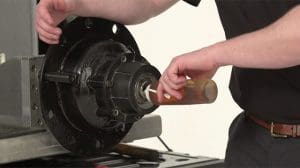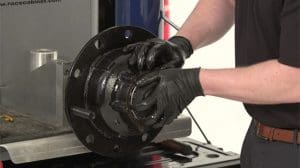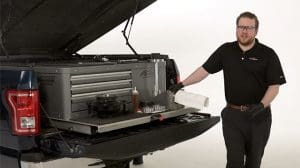Moisture in lubricating oils is a primary contaminant that leads to degradation of lubricant base-stock and additives, and it also corrodes component surfaces and accelerates wear due to reduced fluid film strength. The visual crackle test is a simple field method to detect and roughly quantify the presence of moisture in these fluids.
The crackle-test is a simple test to identify the presence of free and emulsified water that is suspended in oil. Water is the most harmful element to the machine as well as to the oil. The purpose of this tech tip is to inform customers of the proper way to conduct the visual crackle test.
We will be referencing the following STEMCO PDFs:
Method
STEP 1
Achieve surface temperature on a hot plate of 300° F (135° C). Be sure to always use the same temperature.
STEP 2
Violently agitate oil sample to achieve homogeneous suspension of water in oil.
STEP 3
Using a clean dropper, place a drop of oil on the hot plate.
Observable Results
- Fig 1
- Fig 2
- Fig 3
- Fig 4
If no crackling or vapor bubbles are produced after a few seconds, no free or emulsified water is present.
If very small bubbles (0.5 mm) are produced but disappear quickly, approximately 0.05 – 0.1% water is present.
If bubbles approximately 2 mm are produced and gather at the center of oil spot and then enlarge to about 4 mm and disappear, approximately 0.1 to 0.2% water is present.
For moisture levels above 0.2%, bubbles may originate at approximately 2-3 mm and then grow to 4 mm, with the process repeating once or twice. For even higher moisture levels, violent bubbling and audible crackling may result.
Limitations
- The method is non-quantitative.
- Hot plate temperatures above 300° F induce rapid scintillation that may be undetectable.
- The method does not measure the presence of chemically dissolved water
Safety Considerations
- Protective eyewear is suggested.
- Long sleeves are suggested.
- Test should be performed in a well-ventilated area.
Equipment Required
- Hot plate capable of achieving and maintaining 300° F surface temperature.
- Paint shaker (or equivalent) for oil agitation.
- Oil dropper tube or lab syringe.
Applicable Standards
- None
Interferences
- Refrigerants and other low boiling point suspensions may interfere.
- Different base stocks, viscosities, and additives will exhibit varying results.
- Certain synthetics, such as esters, may not produce scintillation.
- The method is non-quantitative.
- Hot plate temperatures above 300° F induce rapid scintillation that may be undetectable.
- The method does not measure the presence of chemically dissolved water
Safety Considerations
- Protective eyewear is suggested.
- Long sleeves are suggested.
- Test should be performed in a well-ventilated area.
Equipment Required
- Hot plate capable of achieving and maintaining 300° F surface temperature.
- Paint shaker (or equivalent) for oil agitation.
- Oil dropper tube or lab syringe.
Applicable Standards
- None
Interferences
- Refrigerants and other low boiling point suspensions may interfere.
- Different base stocks, viscosities, and additives will exhibit varying results.
- Certain synthetics, such as esters, may not produce scintillation.
To access our full library of Tech Tips,click here.
For in-depth articles covering industry news and trends, product spotlights, case studies, customer insights, and “thought leadership” topics from STEMCO professionals, visit The Wheelhouse Blog.






